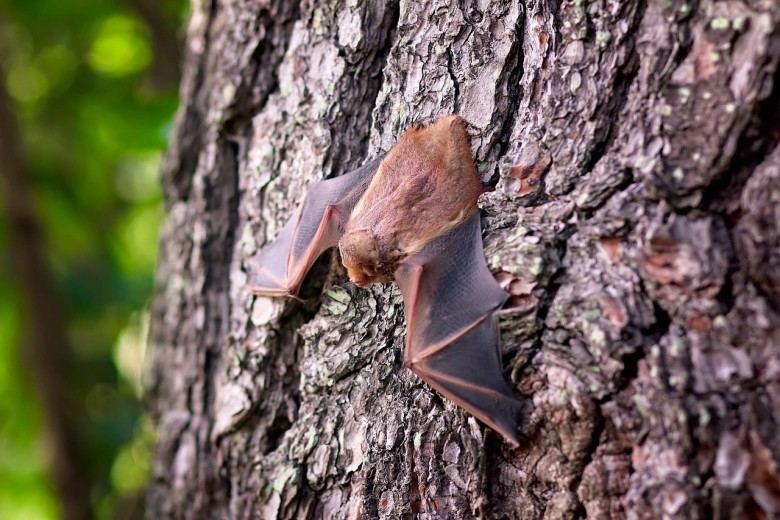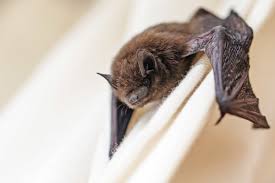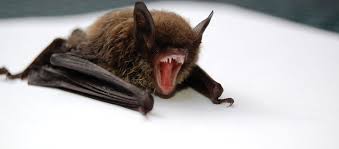How to Get Rid of Bats in the Attic
Know Your Neighbors
There are hundreds of types of bats in the world, but if you live in New England and you’ve got bats in your attic, they are almost certainly brown bats. Little brown bats (Myotis lucifugus) have a wingspan of approximately 8 inches and weigh less than half an ounce. Big brown bats (Eptesicus fuscus) can grow to be twice the size of little brown bats. Males typically roost individually, but female brown bats of both sizes form colonies in attics or barns when they are preparing to give birth (typically in June). Once the young have been born, little brown bats leave the buildings behind, preferring to hibernate in caves during the winter. Big brown bats, however, often hibernate right in homes — so if you’ve got winter houseguests, they’re probably of the big brown variety.

Why Are There Bats in My House?
Female bats are attracted to small sections of homes for nesting purposes. The most common areas to find bats include the walls, attic, and chimney. Covered porches also provide the shelter bats are looking for in nesting sites.
A warm attic with low light is the perfect area for a bat to nurse her young. Unfortunately for the humans, bat feces and bat urine can accumulate and lead to foul smells and health issues. Did you know that histomplasmosis is a dangerous disease associated with bat guano?
Bats enter homes through small gaps. A bat only needs a half-inch crack in a structure’s mortar to enter the area. The animals most often access homes through gaps between the soffit overhang and exterior siding.
On rare occasions, a bat could fly into your home through an open window. This is unlikely, and if it occurs, homeowners see the animal immediately. When bats sneak in through cracks, it can take years for people to notice. Oftentimes, the first sign of a long-standing bat infestation is the overpowering smell of bat guano and bat urine.

5 Effective Home Remedies To Get Rid of Bats
1. Moth balls
The moth balls are also referred as naphthalene balls. They are among the best solutions to get rid of bats. They not only chase away the bats from your houses but also make sure that they do not re-enter your home ever again. These moth balls are readily available at pest control stores and shops. The method of using these moth balls is quite easy; you just need to tie them in a fine hardware cloth and hang that fabric in the house. The efficiency and effectiveness of this moth ball depend on the ventilation of the moth ball. If the moth ball is placed where the ventilation is poor, the results will be poor as well. The balls should frequently be placed for better results. The moth balls must be used very carefully because if it is employed in large quantities, it can cause health risks.
2. Sealants
If you have enough netting material and sealants, you have the way to get the bats out of your house. You just have to look for the residing areas of the bat and observe their entry and exit timing. Once you get to know that the bat has left the place in search of food or for roaming you need to clear the area at once.
3. Phenol
Phenol is the best one to make the bats leave your place. This repels very annoying and bad odor to repel the bats. It makes the place very unpleasant and unbearable for them to reside in. The place starts irritating them. It encourages them to leave the place and find a more clean and peaceful place to live in. The best one recommended is the white phenol. You can use it in a water spraying bottle and spritz it all over the place where the bats reside. The best way is to keep spraying it until the odor gets so strong that the home bats leave. It is a unique method to drive the bats quickly.
4. Aerosol
You can easily get the per aerosol repellents in your pest control stores nearby your houses. You simply need to buy these repellents and spray them where the bats reside. Soon they will go and find a peaceful place to live in. It does not physically harm the bats. If you see bats at the roosting spot avoid spraying
5. Mylar balls
It is the most creative way to chase away the bats residing nearby. Once you see that the bats have left their place immediately hang these Mylar balloons. These balloons are filled with helium. You should keep the balloons in motion. These Mylar balloons are mainly kept in motion to scare the bats away. You should go for the Mylar balloon that shines the most. Hang the ball move near the bat’s nest. Once they get, the scared chances are that they will never return. One thing is that you have to make sure to fill the balloon with helium regularly.

Smells That Can Repel Nuisance Bats
A simple, safe, and humane method to consider for bat prevention: sprinkle certain spices or scents around your home that bats hate! That’s right! Just like humans, bats don’t like certain smells either, particularly strong or pungent ones. Some smells bats hate so much, they’ll stay away from them like Superman does Kryptonite! Continue reading to learn three common smells to use around the exterior of your home as a safe and humane means of bat control.
Mothballs
Have you noticed bats are never caught lingering old coat closets? That’s because mothballs are so pungent, bats cannot stand the smell of them. Although they are not safer household pets or children, mothballs can be used as an effective preventative maintenance against bats and other nuisance wildlife. Play 15 mothballs inside a bowl, and place them around the exterior of your home where bat activity has been noticed. But be careful where you put these, and monitor them regularly to ensure the safety of others.
Menthol
Just like mothballs, menthol has a very strong odor. In bats do not like strong smells. Now you don’t want to go breaking up menthol cigarettes and sprinkling the tobacco all over the place, as this could be toxic to pets and hazardous to children. But you can purchase menthol extract or rub, and then place a tablespoon of it in a bowl with water for a non-toxic, fresh-smelling bat repellent. Place the bowl outside of your home where you know bats have been active and replenish as needed.
Mint
Another strong-smelling scent that repels nuisance bats is mint. You can purchase mint vapor rub, spearmint extract, peppermint extract, or mint leaves. Then simply mix it (grind mint leaves) with water, and place it in a bowl outside of your home where you have spotted bats. You may even so cotton balls and mint extract and place those in a bowl outside of your home as well. This is a bit stronger, and may be more effective for large colonies of bats. You can also do this with menthol extract.
Signs of Bats in the Attic
Their droppings carry disease too. This is why having bats in the attic of a house can be extremely dangerous to humans and other animals. You should regularly check your attic to ensure that bats haven’t taken up residence there. Look out for these bat signals that might mean it’s time to contact a humane animal removal company.
1. Bats at sunrise or sunset
Bats are nocturnal animals, so you won’t see them during the day. But if you see one flying around early in the morning or at night, there might be more living in your attic.
2. Bat droppings
If your attic is infested, you’re likely to encounter the droppings, or guano, outside your home, particularly near any entry points. It’s also possible to come across the droppings on decks, porches, windowsills and in the attic.If you can’t see them, you might smell them. Guano produces a strong, toxic odor similar to that of ammonia.
3. Chirping sounds
Generally, bats communicate by making chirping sounds, which also helps them navigate through specific paths at night and locate food. Listen for these sounds in the evening, at night or before dawn.
4. Scratches on the walls
Scratches or scurrying in the walls of your house might point to a colony of bats in your attic.
5. Stains at entry points and exits
A bat has a layer of grease on its coat. It leaves a greasy spot when it enters your home. Look out for these spots around holes in your house, on the walls and even on your roof. If you see these stains, be sure to clean and sterilize the area to prevent the spread of fatal diseases.
